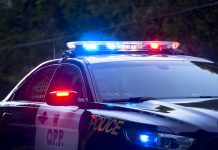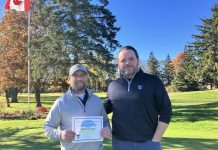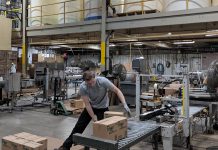
Chloë Black is a well-known cyclist and coach. Currently living in Tucson Arizona, she was born and raised in Peterborough and returns every summer to visit her family and (of course) to cycle.
This past weekend, when we saw Chloë’s story about “Shelly”, a Painted Turtle, we knew we had to share it.
For rural residents and outdoor enthusiasts, the sight of a turtle trying to make its way across a road or highway becomes a common sight. In the Kawarthas, species like the Painted Turtle are still plentiful but their habitat is disappearing and disjointed. Other species like the Blanding Turtle are in serious decline.
Turtles are most frequently observed in the Kawarthas during June — the height of their nesting season. Females are often found crossing roads to reach traditional nesting sites or laying eggs in the gravel along roads.
Turtle nests are laid in soil that is easy to dig and provides the correct amount of moisture so the eggs do not get too dry or too moist during incubation. Since the eggs are incubated by the sun’s warmth, nests are usually laid in a spot where there is not much vegetation to shade the ground.
It was during a warm sunny day in June of 2013 that Chloë encountered Shelly for the first time. Here’s their story:

First, a history. I love turtles. I always have. Anyone who’s ever ridden with me in Ontario knows that I stop to take turtles off the road before they could possibly be hit/killed. No ride or interval means as much to me as helping these beautiful creatures to live another day.
On June 2 last year, I started out Wallace Point Rd to go for a long, solo ride. I didn’t get far, near-ish Stewart Hall, and I saw a fairly large Painted Turtle that had clearly just been hit.
She was very much alive, and writhing in pain. I could see clear into her body through the crack in her shell.
Being on my bike, I went into a bit of a panic. I did what I have always done since I was a little girl when I found an injured animal: I called my Dad. I told him I needed his help. He went online, saw how we were to properly collect her, contacted the Turtle Trauma Centre and let them know we were coming.
He found me waiting beside her and we gently scooped her up and placed her into a clean container, and away we went, my bike in the back of the van, and “Shelly” on my lap.
They had us fill in a form and informed us that even if she didn’t live, euthanasia would be a better fate than dying slowing on the side of the road. There was a box to tick on her intake form asking if we’d be interested in being involved with her release, should she live. I enthusiastically checked that box. I remembered her intake number: 13-111.
Weeks passed, then months, and I heard nothing. A friend suggested I call and ask, but it got to a point where I knew she didn’t make it. It had been too long.
I wouldn’t change a thing. It was worth the effort to know she didn’t suffer. It was horrible seeing her writhing in pain like she was.
Flash forward to last Tuesday, May 27, 2014. A message on my phone said “We understand you wanted to be involved in release of the turtle you rescued. We’re happy to tell you she is ready to go home, as well as her six babies”.
So yeah. Yesterday, my Dad and I went to the Turtle Trauma Centre and picked up Shelly and her six babies.
We took them to the nearest water within a kilometer of where we found her, and watched them be turtles.
And I can honestly say it was a life-changing experience.
About the Kawartha Turtle Trauma Centre
The Kawartha Turtle Trauma Centre (KTTC) is a registered charity whose goal is to protect and conserve Ontario’s native turtles and the habitat in which they live. They accomplish this by operating a turtle hospital that treats, rehabilitates, and releases injured turtles, by performing extensive research in the field to further conservation initiatives, and by running a comprehensive education and outreach program.
KTTC strives to increase awareness of the challenges facing Ontario’s turtles and to inspire individuals to act- that on person truly can make a difference!
If you’re interested in supporting KTTC, you can volunteer, make a donation, or become a member.
If you find an injured turtle, here’s what you should do.





























